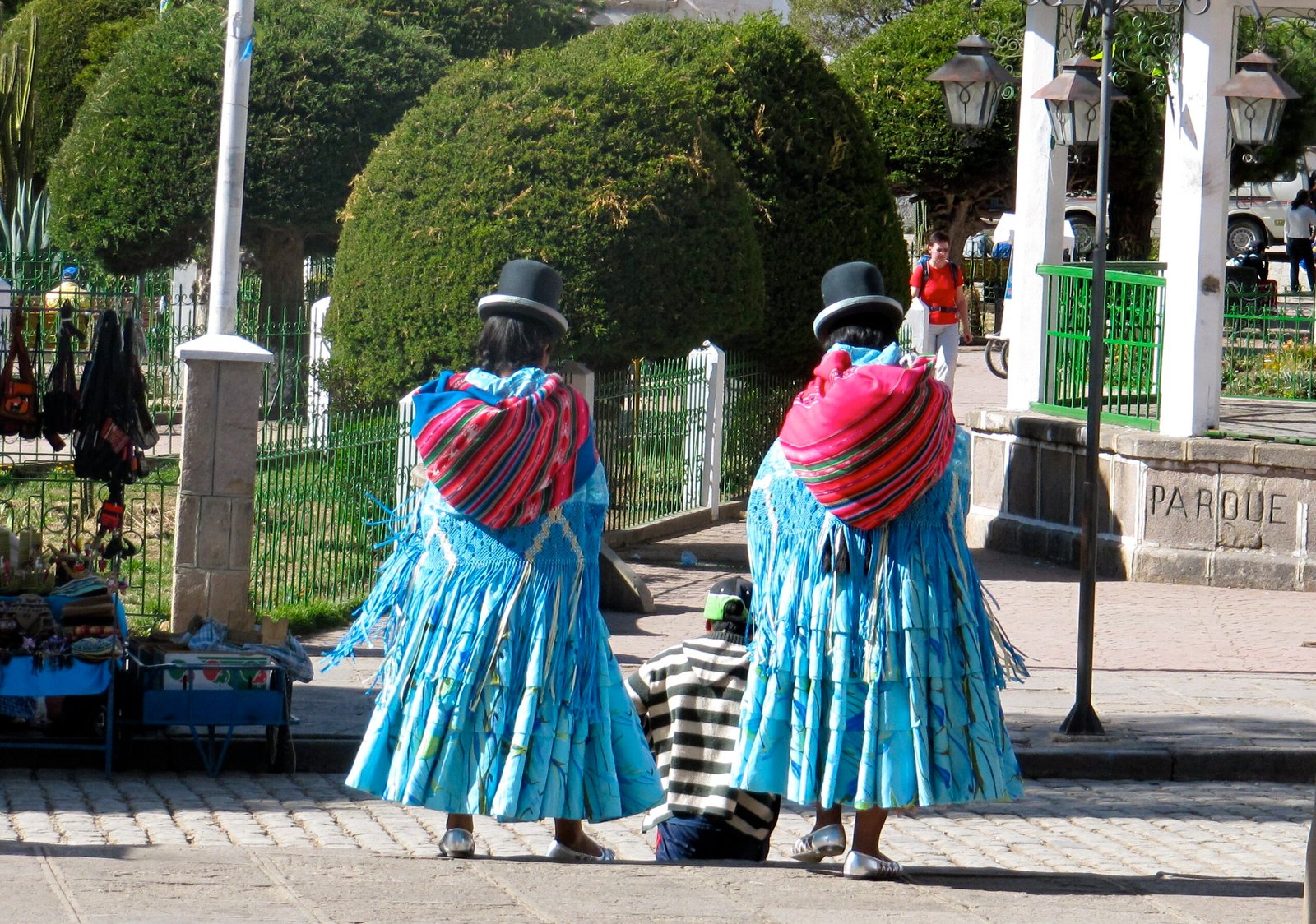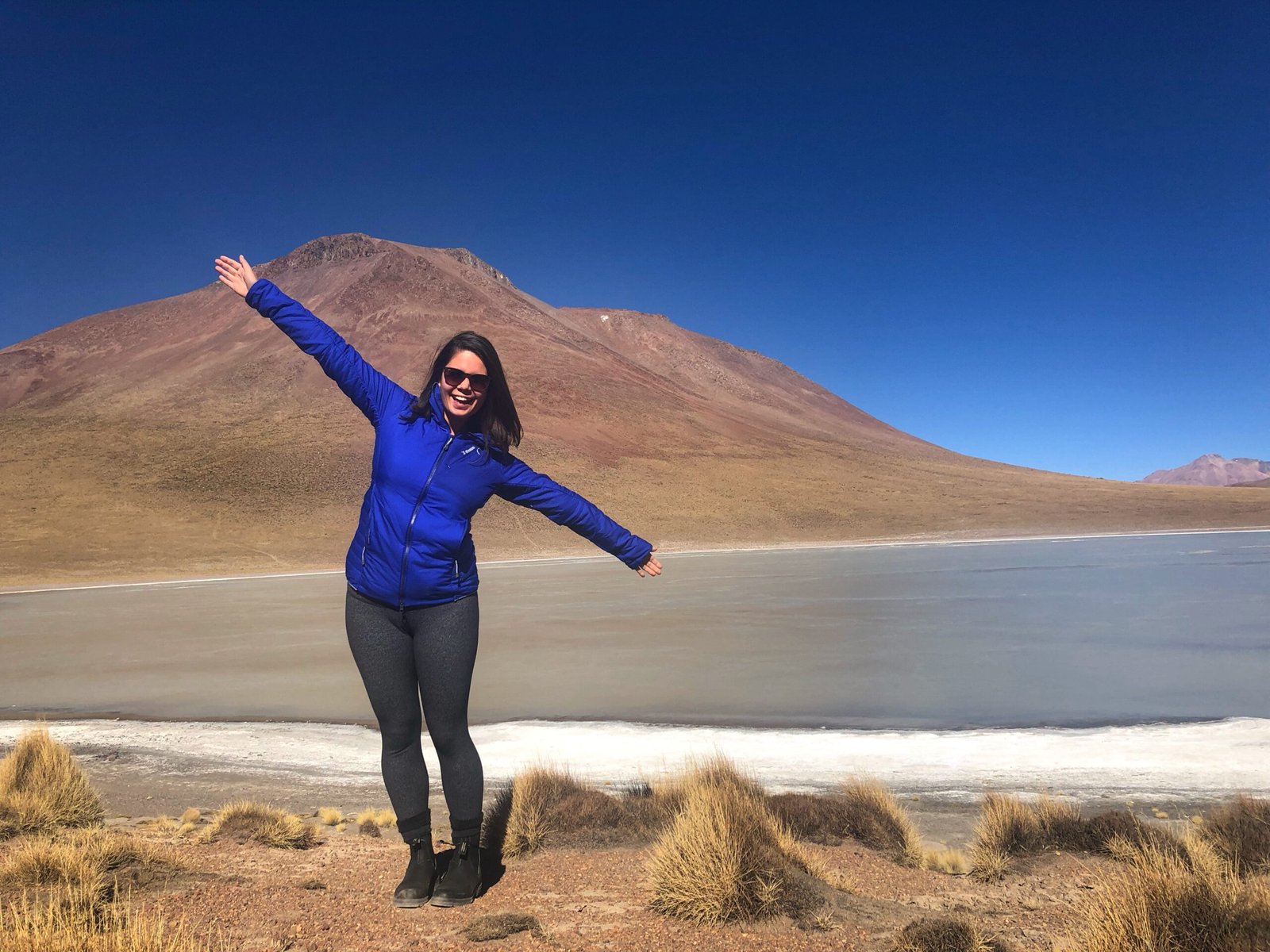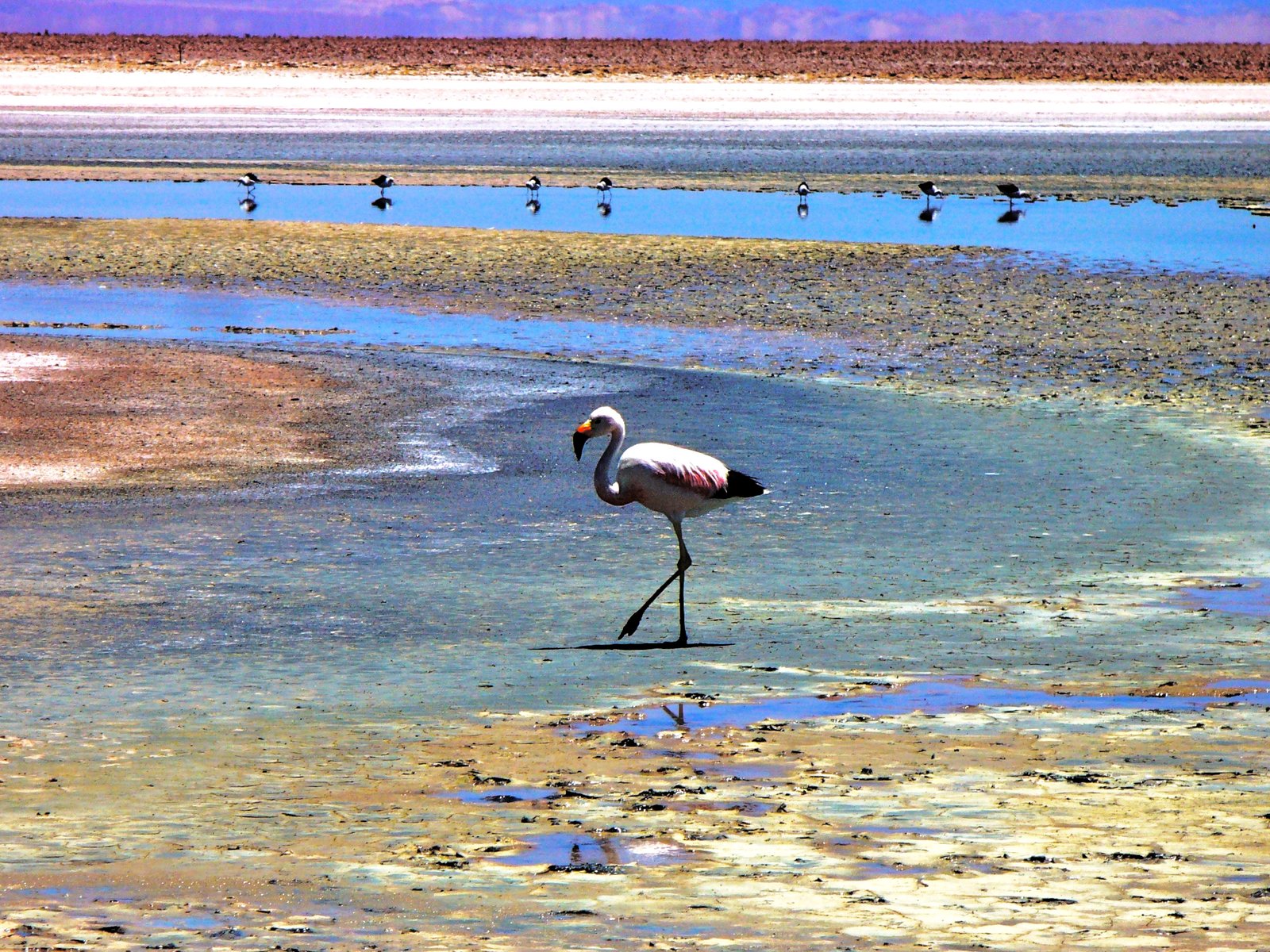Bolivia & Atacama Adventure
Salt-flats to the Driest Desert on the Planet
Fully-Customizable Sample Itinerary
SALT-FLATS + ATACAMA DESERT
Bolivia is a rugged country comprised of surreal landscapes. A bit rough around the edges, Bolivia is one of South America’s most diverse and perplexing nations. It is a mind-bogglingly beautiful country due to its unforgiving, yet breathtaking (both literally and figuratively) terrain. This Bolivia Tour begins in the chaotic streets of La Paz and continues to the cobble-stoned, colonial cities of Sucre and Potosi.
No tour to Bolivia is complete without a 4×4 adventure across the otherworldly landscape of the Salar de Uyuni, the world’s largest salt flats.
The Salar de Uyuni gives way to Chile’s Atacama Desert, the driest on the planet. The Atacama Desert is surrounded by volcanoes, fields of steaming geysers, a host of otherworldly rock formations, and weird moonscapes.
This isn’t a tour for the faint of heart, but for one who craves adventure. This itinerary can be customized to best fit your interests and budget. Contact Us for more information about this Bolivia & Northern Chile itinerary or we would be happy to create something just for you.

Day 1: WELCOME TO LA PAZ, BOLIVIA
Welcome to the world’s highest “de facto” capital city in the world at an elevation of approximately 3650m (11 975 ft). La Paz is a spectacularly located city; draped around a bowl-shaped canyon, surrounded by snow-capped peaks, with buildings clinging precipitously to the cliffs. La Paz is like no other city on earth.
As today is arrival day, we have no planned activities.
Overnight: La Paz
Meals: -/-/-

Day 2: LA PAZ CITY TOUR
This morning, we have a guided tour of La Paz which was first founded by Spanish conquistadors in 1548 as Nuestra Señora de La Paz (Our Lady of Peace). La Paz is a city with many different faces and it takes some time to truly appreciate the seemingly chaotic nature of this Andean gem. The streets are never dull with the colourfully dressed indigenous women bustling about in their bowler hats, layers of petticoats, and beautiful shawls.
We start our exploration of the city by visiting the unearthly formations of the Valley of the Moon which is located in the canyon valley. From the Valley of the Moon we continue to the beautiful colonial quarter, Plaza Murillo, and then onto the Witches’ Market where we’ll find all sorts of interesting potions, figurines, and herbs to ward off evil spirits. You will have time this afternoon for independent exploration.
Overnight: La Paz
Meals: B/-/D

Day 3: TIWANAKU
This morning we make our way toward one of the most important archaeological sites in the Americas, Tiwanaku. Located on the desolate altiplano, miles away from the fertile shores of Lake Titicaca, archaeologists believe that Tiwanaku once had a population-carrying capacity upwards of 250 000. Though the area around Tiwanaku may have been inhabited as early as 1500 BCE, the empire of Tiwanaku really began to take shape around the 7th century. The Tiwanaku rapidly absorbed other cultures rather than eradicating them and had extensive trade routes throughout their empire. Perhaps a severe shift in climatic conditions caused the mighty empire to crumble by the year 1000 CE. Two centuries later, the Inca Empire began to rise in the Northern frontier of the Tiwanaku state.
We explore Tiwanaku with a local guide hoping to better understand both the rise and fall of such an influential empire. The monumental architecture at Tiwanaku, including The Sun Gate and Sunken Temple, are of exceptional craftsmanship that even the Inca could not reproduce.
Overnight: La Paz
Meals: B/-/-

Day 4: LA PAZ TO SUCRE
We transfer to the airport in El Alto before taking our flight to the country’s judicial capital, Sucre, located at 2800m (9186 ft) above sea level. Situated in a broad highland valley on the edge of the altiplano, Sucre is often considered the most beautiful city in Bolivia with its spring-like conditions year-round. Whether being referred to as Sucre, La Ciudad Blanca, Chuquisaca, Charcas, or La Ciudad de la Plata – this UNESCO World Heritage Site boasts some of the finest Spanish colonial architecture in South America. The site became the headquarters for the Spanish Royal Court, which by the late 18th century ruled over colonial Paraguay, parts of Peru, Chile, Argentina, and most of Bolivia. In the wake of the Latin American independence movement, 1825, the city was renamed Sucre, after the liberator Simon Bolívar’s second-in-command, General Antonio Jose de Sucre.
Sucre boasts a wealth of well-preserved colonial monuments, museums, convents, churches, and monasteries. This afternoon we will have the opportunity to visit many of these colonial gems on a half-day guided tour as well as “Casa de la Libertad” and “ASUR“ – an impressive indigenous textile art museum
Overnight: Sucre
Meals: B/-/D

Day 5: SUCRE TO POTOSI
This morning we visit one of the most unique attractions in Bolivia and step back 65 million years into the past at Cal Orck’o (Cretaceous Park). The area around Sucre is of great paleontological importance as Cal4Orck’o is believed to be the largest extension of its kind on the planet and boasts approximately 5000 footprints and 294 identified species of dinosaurs.
At an altitude of 4070m (13 350 ft), Potosí is the highest city of its size on earth. Potosi was founded in 1545 as a mining town and quickly grew to become one of the wealthiest and largest cities in the world with its famous silver-lined streets. The Spanish conquistadors never found the legendary city of gold, El Dorado, but they did get their hands on Potosi’s Cerro Rico (Rich Hill) which was full of silver and from which they benefited from its tremendous wealth for three centuries. There is still a saying in Spanish “vale un potosi” which means to be worth a fortune. This great wealth, came at an enormous cost as it is estimated that 8 million slaves, many from Africa, died mining the interior of this devil’s mountain.
Today, Cerro de Potosí’s silver deposits have been depleted, leaving behind a huge city, with few avenues for survival. As a result, the mountain is still being mined, but mainly for tin, lead, zinc and trace amounts of silver.
When the government withdrew its support in the 1950’s, no longer subsidizing the mining of the mountain, small cooperatives took over. In total, 15,000 men from Potosí work the mines. The co-ops are formed organically and their members go all in together, investing in equipment and supplies and sharing in the profits. Though Potosi is a mere shadow of its former self, it has been declared a UNESCO World Heritage Site with dozens of beautiful colonial churches and ornate architecture.
Overnight: Potosi
Meals: B/-/D

Day 6: POTOSI CITY & MINE TOUR to UYUNI
This morning we visit the mining market of Calvario followed by a tour of one of the mines. Though there is no longer any silver, the mountain is still being mined, but mainly for tin, lead, zinc, and trace amounts of silver. When the government withdrew its support in the 1950’s, no longer subsidizing the mining of the mountain, small cooperatives took over. In total, 15,000 men from Potosí work the mines. The co-ops are formed organically and their members go all in together, investing in equipment and supplies and sharing in the profits and making sacrifices to appease Tío, the devil-like figure that the miners idolize.
We continue our tour around Potosi visiting some of the colonial highlights such as the Cathedral, San Francisco Monastery, and La Casa de la Moneda (Royal Mint).
Late this afternoon, we travel to Uyuni where we spend the night.
Overnight: Uyuni
Meals: B/-/-

Day 7: SALT FLAT EXCURSION (Salar de Uyuni – 3 days)
No trip to Bolivia is complete without a visit by 4×4 jeep to one of the most mind-blowing natural sites on earth, the Salar de Uyuni. Submerged twice by a large, high-altitude lake, the world’s largest salt flats now cover a total area of over 12 000 square km (7440 square miles). The last large lake dried up about 8000 years ago, leaving The small lakes of Poopó and Ururu as well as the salt flats of Uyuni were left behind when the last large lake dried up around 8000 years ago. Ogle at the incredible views of the salt-encrusted lakebed surrounded by golden-hued mountains, snow-capped peaks and an endless sapphire horizon that will forever engrave itself in your memory.
We visit a salt factory where the workers extract salt using ancient techniques.
Overnight: Salt Flat Hotel
Meals: B/L/D

Day 8: SALAR DE UYUNI (Salt Flats)
We continue our adventure across this other-worldly landscape to a series of spectacularly coloured lagoons. Keep your eyes peeled today for wildlife that thrives this desolate landscape such as the vizcachas, vicuña, and 3 species of flamingo. Flamingos, several species of ducks, and gulls live in the lagoons alongside the snow-capped volcanoes.
The salt flats give way to the desert which is a kaleidoscope of brown, red, orange, and beige.
Overnight: Salt Flat Hotel
Meals: B/L/D

Day 9: SALAR DE UYUNI – DESERTS & VOLCANOES
We are up for sunrise to soak in the stark beauty of the desert with the volcano-dominated backdrop. Our tour of the desert takes us to some coloured lagoons of incredible red and blue-green coloured mineral-rich waters.
This morning we visit Laguna Verde as well as the Arbol de Piedra (Rock Tree). Along the way admire the thermal waters of the Sol de Mañana Geysers.
Cross the border between Bolivia and Chile. Continue by land to the artistic oasis of San Pedro de Atacama, Chile. Sitting at an altitude of 2400m between the desert and the altiplano, or puna, this has been an important settlement since pre-Hispanic times, originally as a major stop on the trading route connecting the llama herders of these highlands with the fishing communities of the Pacific.
Overnight: San Pedro de Atacama
Meals: B/-/-

Day 10: VALLEY OF THE MOON (Valle de la Luna)
This half-day tour follows in the footsteps of the ancient Atacameños and Incas, and your tour guide will show you the archaeological site Pukará de Quitor. The fortress of Pukará de Quitor is just 3km/2mi north of San Pedro. It was erected by the Atacameños in the 12th century BC, and later extended by the Incas. The Spanish took the fort in 1540. There is a beautiful view towards San Pedro and the Andean mountain chain from the fortress, including of volcanoes in the background. After visit the fortress we will return to San Pedro to visit the Museum and understand what we have seen in Quitor.
In the afternoon you will visit to the Valle de la Luna to enjoy the sunset. Probably the best-known destination around San Pedro is the Valle de la Luna (Moon Valley) that lies in the salt mountains, to the west of town. This tour into the rugged beauty of the Atacama Desert begins at dusk. With the Licancabur volcano providing the backdrop, strange salt and rock formations in the middle of the valley’s barren sandy landscape really do look like a moonscape. After a tour past the bizarre natural rock and salt shapes, the excursion ends with a hike up a giant sand dune. From its highest point, a breath-taking view onto the valley and the Licancabur Volcano can be enjoyed. The setting sun bathes the valley in a light that changes with every minute, providing a mesmerizing play of colours. The return drive to San Pedro is after sunset.
Overnight: San Pedro de Atacama
Meals: B/-/-

Day 11: EL TATIO GEYSER
Rise early this morning to visit one of the highlights of the San Pedro area – El Tatio Geysers at sunrise. The fountains that shoot up to 10m/33ft high occur when the morning sun melts the nightly ice caps over the hot springs, located over 4300m/14,108ft. Here the super-heated water gurgles in the frozen ground and erupts violently as steam in over 100 geysers, boiling pools, and fumaroles. It is the largest geyser field in the southern hemisphere and the third largest in the world.
After the spectacular show there, you have the choice of recovering from the morning chill and warming up in natural pools created by hot springs. The return drive to San Pedro takes place around midday.
Option to participate in an astronomical tour this evening in order to truly appreciate the starry skies.
Overnight: San Pedro de Atacama
Meals: B/-/-

Day 12: DEPARTURE DAY
This morning, bid farewell to the otherworldly landscapes of the Atacama Desert. Transfer to airport for domestic flights.
OPTION: Extend your trip to Santiago, Valparaiso, Patagonia, or Easter Island. Option to combine this trip with Peru. CONTACT US FOR TRAVEL INSPIRATION
SAMPLE HOTELS
La Paz: Hostal Naira
Sucre: Mi Pueblo Samaray
Potosi: Hostal Colonial
Salar de Uyuni: Luna Salada or Palacio de Sal, Hotel Takya del Desierto
San Pedro de Atacama: La Casa de Don Tomas
*All accommodation is subject to change due to availability
Tour Exclusions
We are happy to help you extend your stay in South America. Why not extend to Patagonia, Peru, or elsewhere?! Contact us for more information.
IMPORTANT NOTES
PLEASE NOTE: This is a sample itinerary and can be adjusted to best suit your travel needs. Contact us for a curated itinerary of Bolivia & Northern Chile.
Although we always do our best to stick to the itinerary, due to the ever-changing nature of Mother Earth, activities, hotels, and visits are subject to change due to forces beyond our control.
PRICES: The cost of the trip is subject to change and will vary throughout seasons. Price is based on 2 people in twin/double accommodation and will change if number of travellers changes.
FLIGHTS: Please do not purchase your flights until this tour is confirmed.
PASSPORTS: Must be valid for at least 6 months upon return date to your home country. Proper documentation is the responsibility of each traveller.
VISAS: Responsibility of the traveller.
Travel Insurance
Cancellation, Travel, Flight, and Health insurance are required and are the responsibility of the participant to research and secure the appropriate coverage. Click HERE for a Travel Insurance Quote or please email nicola@finisterra.ca for a quote.
Check with your local travel agent /insurance provider/health plan for advice about traveling overseas.
Waiver Form
All participants will be required to sign a Waiver Form prior to departure.
WHY TRAVEL WITH US?
At Finisterra Travel we help you discover, push personal boundaries, and explore the unknown.
We are super passionate about sustainable, transformational, and adventure travel. Definitely not “armchair travellers”, we have firsthand experience of where you’ll be heading. No one wants to feel like a tourist which is why when we plan a custom travel experience for you, we strive to make your adventure as authentic as possible. We offer an array of Small Group Adventures & Custom Trips, and have something for every type of traveller.
Our unique itineraries are designed to best showcase some of our favourite destinations around Africa, Asia, Latin America, the Middle East, North America, and Europe. All itineraries are fully-customizable. Not your typical online travel agency, nor are we quite a tour operator, we are international travel designers with a flair for unique experiences. We’d love to hear from you!
JOIN OUR FINISTERRA TRAVEL COMMUNITY
Stay up-to-date with us when you sign up for our newsletter.





